Precise Color Communication
 |
As we said in Part I-2, different light sources will make colors appear different.
For measuring color, the CIE defined the spectral characteristics of several different types of typical illuminants.
Figure 22 shows the spectral power distributions of some of these illuminants.
A light source is usually built into the color-measuring instrument. This light source may
or may not match any of the CIE illuminants; instead, the instrument determines the data
for measurements under the selected illuminant through calculations based on the data actually measured
under the instrument's light source and the illuminant's spectral distribution data stored
in the instrument's memory.
Figure 22a: Standard Illuminants
Figure 22b: Fluorescent Illuminants
(recommended by JIS for measurements)
Figure 22c: Fluorescent Illuminants
(recommended by CIE for measurements)  |
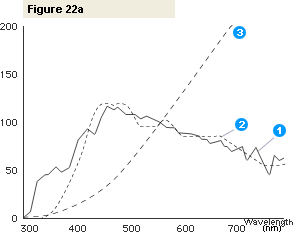 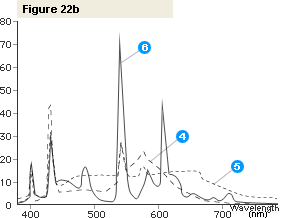 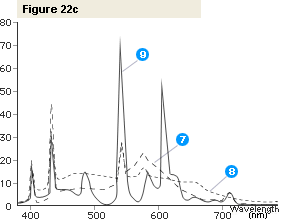 |
Let's look at examples of what happens if we measure our specimen (apple) using a spectrophotometer under Standard Illuminant In example 1, |
|

Example 1
|
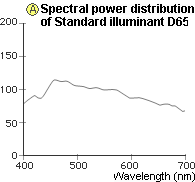
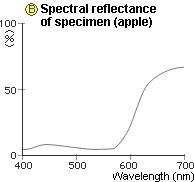
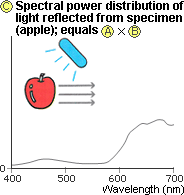 |
Example 2
|
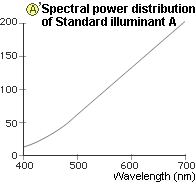

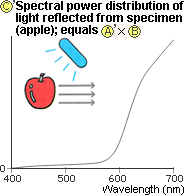 |
| 7/9 | ||
|
|

